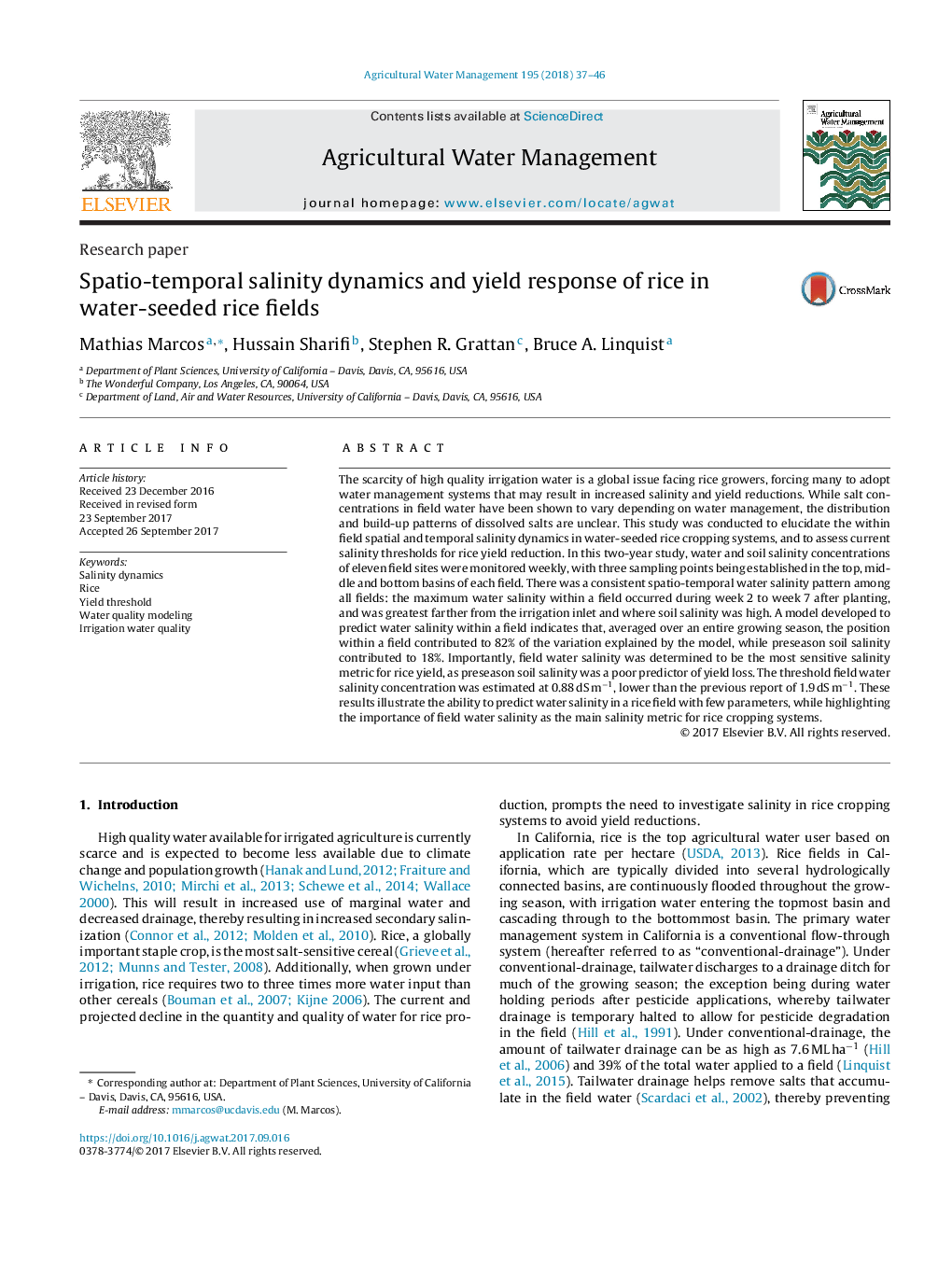| Article ID | Journal | Published Year | Pages | File Type |
|---|---|---|---|---|
| 5758234 | Agricultural Water Management | 2018 | 10 Pages |
Abstract
The scarcity of high quality irrigation water is a global issue facing rice growers, forcing many to adopt water management systems that may result in increased salinity and yield reductions. While salt concentrations in field water have been shown to vary depending on water management, the distribution and build-up patterns of dissolved salts are unclear. This study was conducted to elucidate the within field spatial and temporal salinity dynamics in water-seeded rice cropping systems, and to assess current salinity thresholds for rice yield reduction. In this two-year study, water and soil salinity concentrations of eleven field sites were monitored weekly, with three sampling points being established in the top, middle and bottom basins of each field. There was a consistent spatio-temporal water salinity pattern among all fields: the maximum water salinity within a field occurred during week 2 to week 7 after planting, and was greatest farther from the irrigation inlet and where soil salinity was high. A model developed to predict water salinity within a field indicates that, averaged over an entire growing season, the position within a field contributed to 82% of the variation explained by the model, while preseason soil salinity contributed to 18%. Importantly, field water salinity was determined to be the most sensitive salinity metric for rice yield, as preseason soil salinity was a poor predictor of yield loss. The threshold field water salinity concentration was estimated at 0.88Â dSÂ mâ1, lower than the previous report of 1.9Â dSÂ mâ1. These results illustrate the ability to predict water salinity in a rice field with few parameters, while highlighting the importance of field water salinity as the main salinity metric for rice cropping systems.
Related Topics
Life Sciences
Agricultural and Biological Sciences
Agronomy and Crop Science
Authors
Mathias Marcos, Hussain Sharifi, Stephen R. Grattan, Bruce A. Linquist,
